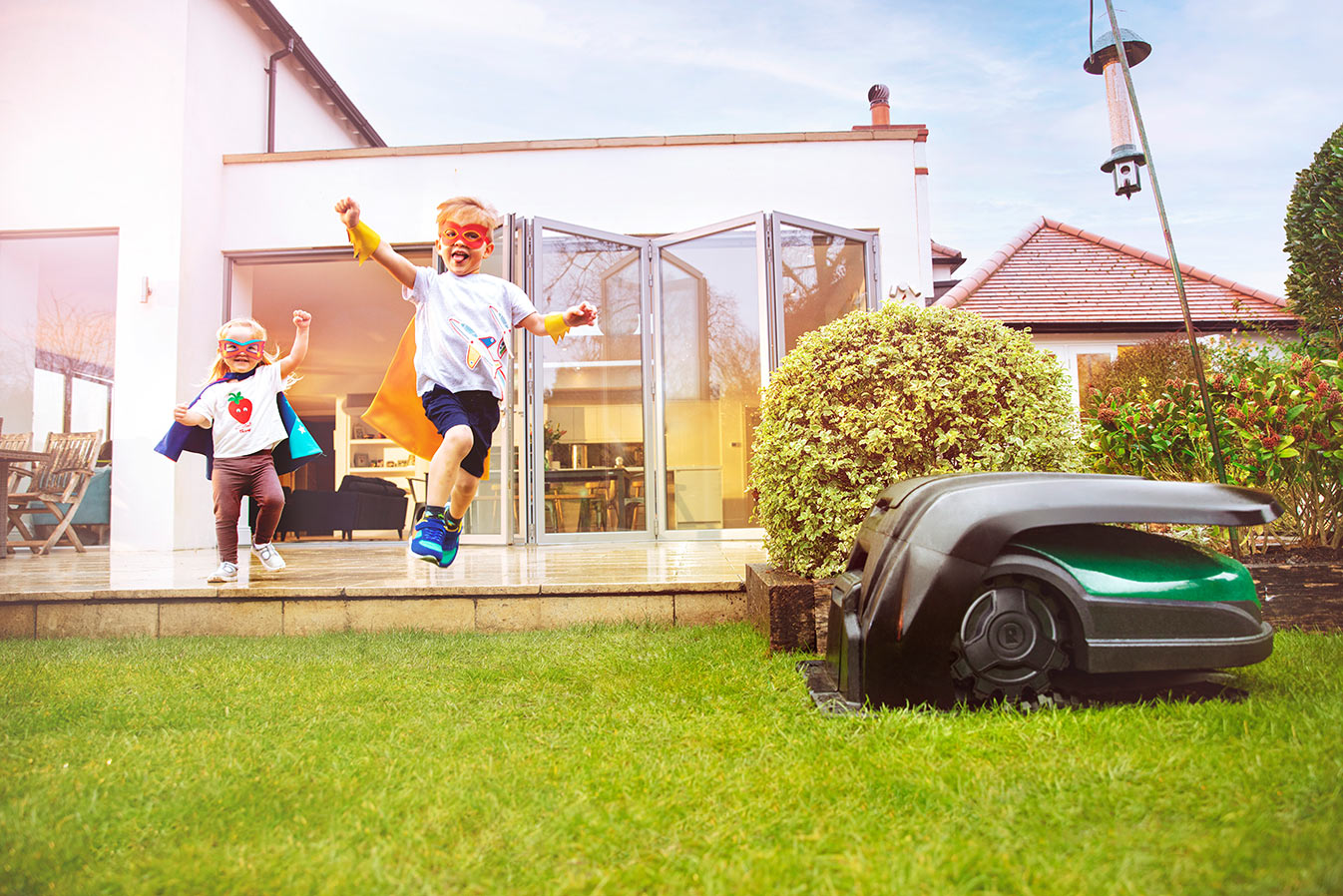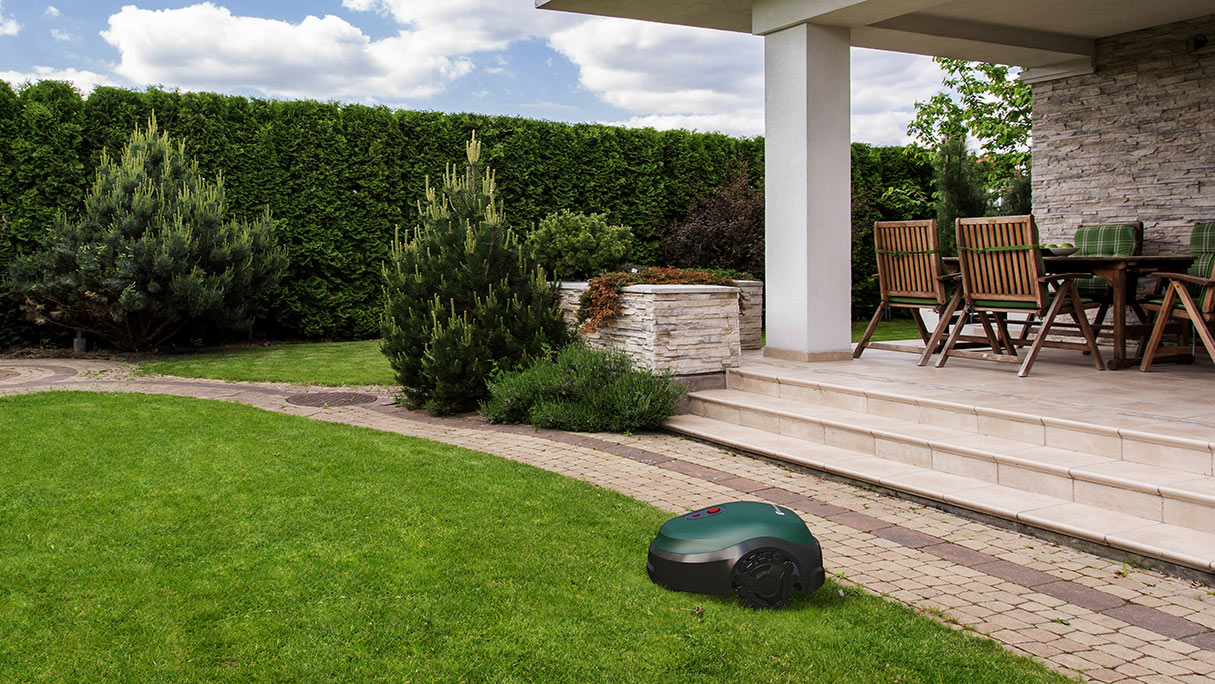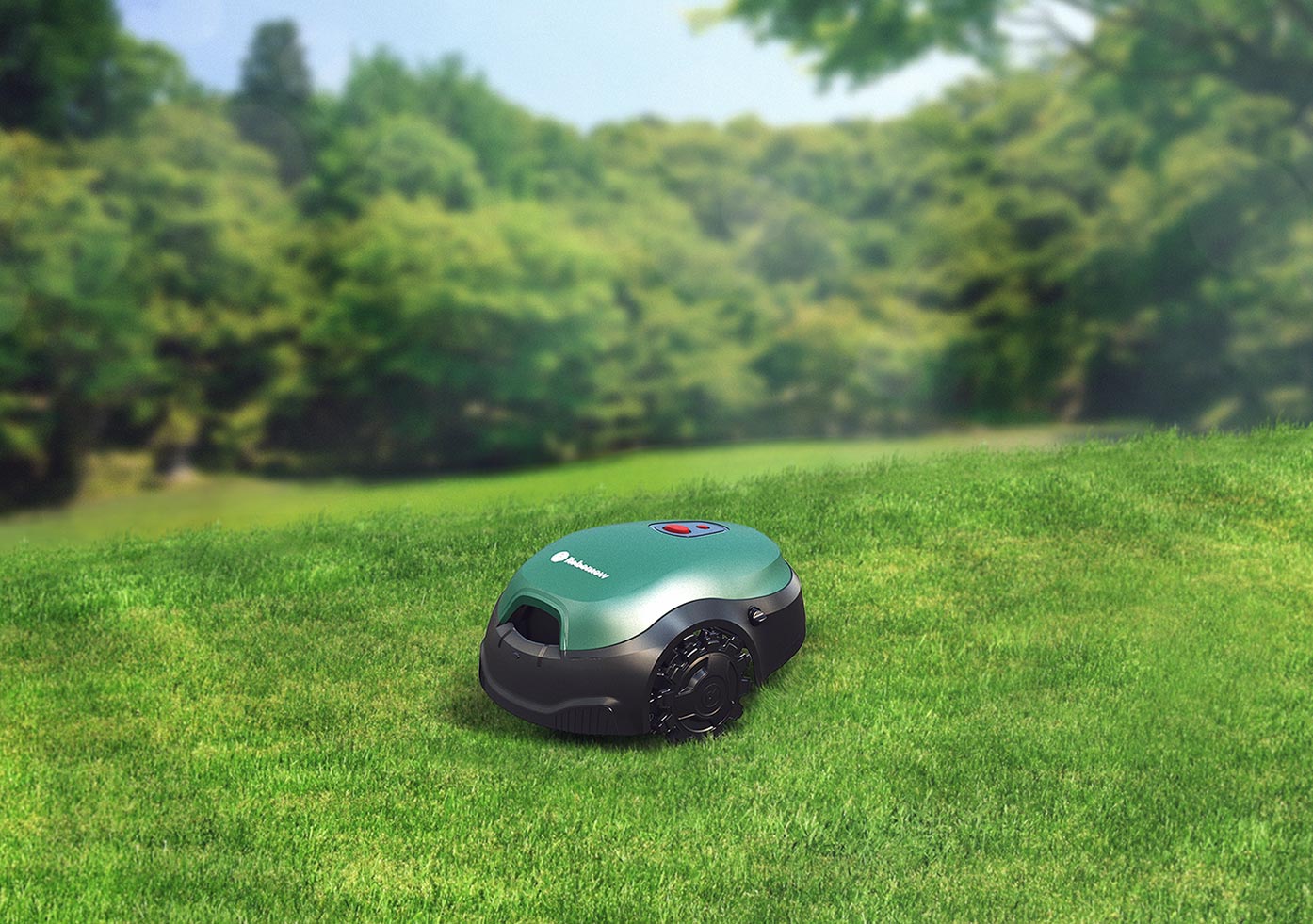Which robotic lawnmower is suitable for 2,000 m²?
20.05.2021
With the purchase of a robotic lawnmower, almost every garden owner pursues the dream of putting their feet up and leaving the lawn care completely to their garden helper. For this to succeed, however, it is important to have a good balance between the area output of the device and the actual size of the lawn. In addition, numerous other equipment features play a key role in making the work as easy as desired.
Area performance vs. mowing times
Manufacturers specify a maximum area output for each robotic lawnmower. Nevertheless, this can only be achieved under truly perfect conditions. Meaning, it is well worth taking a look at the recommended performance (rather than maximum). This takes into account that there are challenges in almost every garden such as slopes, obstacles that need to be avoided or angles that require complex turning maneuvers. All of these factors will cause the robot to work slower or require additional battery capacity that will, in turn, lead to more time at the charging station.
Taking these factors into account is not enough if you want to send the robot out only on certain days or at restricted times. This results from the fact that manufacturers determine the maximum and recommended mowing times based on the maximum possible mowing time. For some robotic lawnmowers, this can be 24 hours a day. If the robot is only to be in operation 6 hours a day, the maximum performance is reduced by 1/4 of the original specification.
To ensure that the robot is suitable to a lawn, the first thing to do is to think about the garden layout and possible mowing times. Then, other features come into play that can prove helpful in increasing the efficiency of your robotic mower.
Powerful Li-Ion batteries
The longer the robotic mower spends time on the lawn before returning to the charging station and the shorter it stays there until the battery is fully recharged, the faster the entire job is done.
Modern Li-Ion batteries, which are comparatively robust, have become the go-to standard. Above all, they impress with their favorable ratio of weight to power.
Sensors for greater maneuverability
In gardens with many obstacles, there is a risk of massive time loss due to constant turning maneuvers. Lawn robots don't have eyes, so they don't detect objects until they run into them. Therefore, the robot changes direction and continues its work along a different path.
Modern 360° sensors not only increase safety by detecting obstacles around the device at an early stage, but also have a positive effect on maneuverability.
Perfect grip off-road
Slopes also reduce the speed of a robotic mower, especially if the ground is damp and the robot starts to slide. Special traction wheels provide the perfect grip on level ground, as well as on slopes, in any weather. At the same time, the device can climb slopes quite effortlessly, which can have a positive effect on battery performance.
Whisper quietly through the garden
The lower the noise level of a robotic lawnmower, the longer the mowing times can be. They can even be extended to weekends (Sunday).
Robots with a noise level of less than 65 dB are considered particularly quiet, which is good news for your neighbors. Even if you are in the garden during mowing times, there is a good chance that you will not even notice your robot.
Perfect cutting pattern on the area
In the case of areas of 2,000 m², there is a high probability that the landscape will not be perfectly flat but will have some minor irregularities. Thus, there is a risk that the robotic lawnmower simply drives over certain areas without cutting evenly. The result: the cut looks patchy.
Luckily, this is not the case with a robotic lawnmower with a pendulum-suspended cutting deck. This function allows to robot to follow the contour of the ground, providing the same length at every point.
Multi-zone mowing for complex gardens
Hardly any garden will have a single large area of 2,000 m². Much more likely is a large main zone and various secondary zones, perhaps even separate zones. To ensure that the robotic lawnmower really takes every part of the garden into account when mowing, a model is needed that allows several starting points to be programmed. The robot then moves to these points at regular intervals and takes care of these areas.
Easy programming and control
In a large garden, it's helpful if you can send the robotic mower back to the charging station via app with ease. Manual navigation through passages is also easy with your smartphone if the GSM module is installed in the device.
Be that as it may, simple control is sometimes required not only from a distance but also directly on the device. Devices with a clear touch display are particularly useful here.
Theft protection thanks to PIN
With a lawn area of 2,000 m², you might not be able to locate your robotic lawnmower. Bushes, trees or flower beds can block the view. Apart from that, you most likely don't watch the robot all the time anyway. To prevent thieves from simply grabbing the robot and stealing it, effective theft protection is required. While some models work via a PIN code, other models with GPS tracking offer functions such as geofencing - further increasing security.
At 2,000 m², a powerful robotic mower with high efficiency is required. This can be greater optimized with additional features. Therefore, it is advisable not to focus exclusively on the area output when buying, since achieving perfect cutting results in the desired mowing time is also key.
Products
Buy a Robomow
Robomow owner
About us
sitemap
Sales & Support


